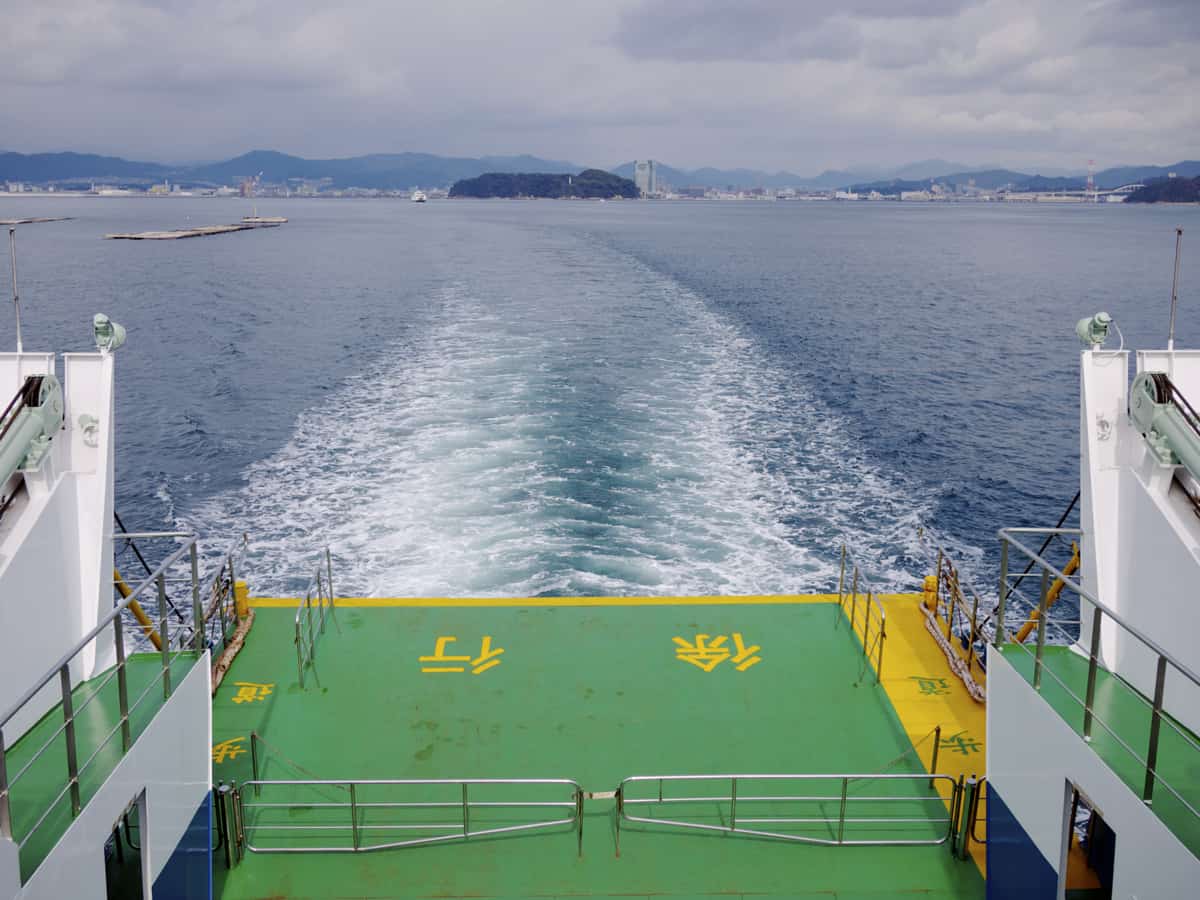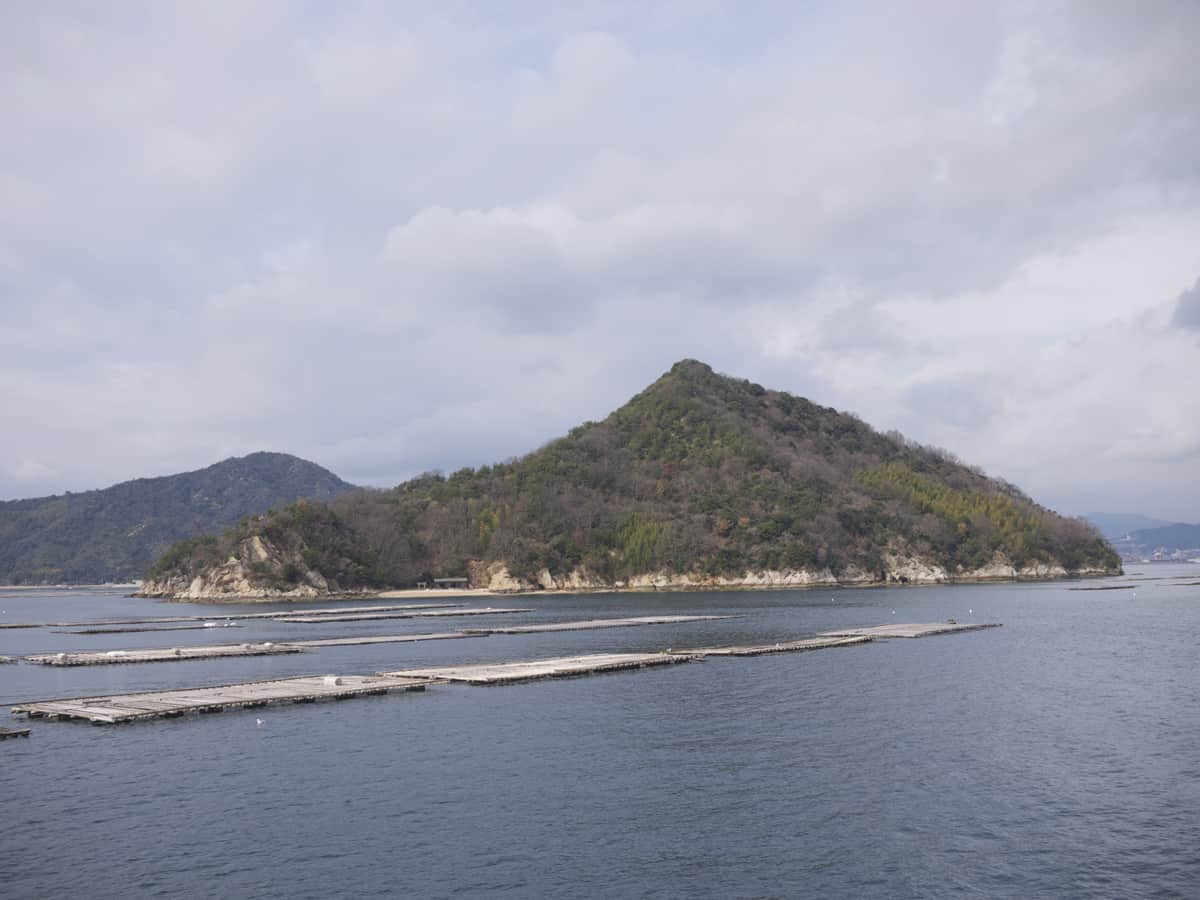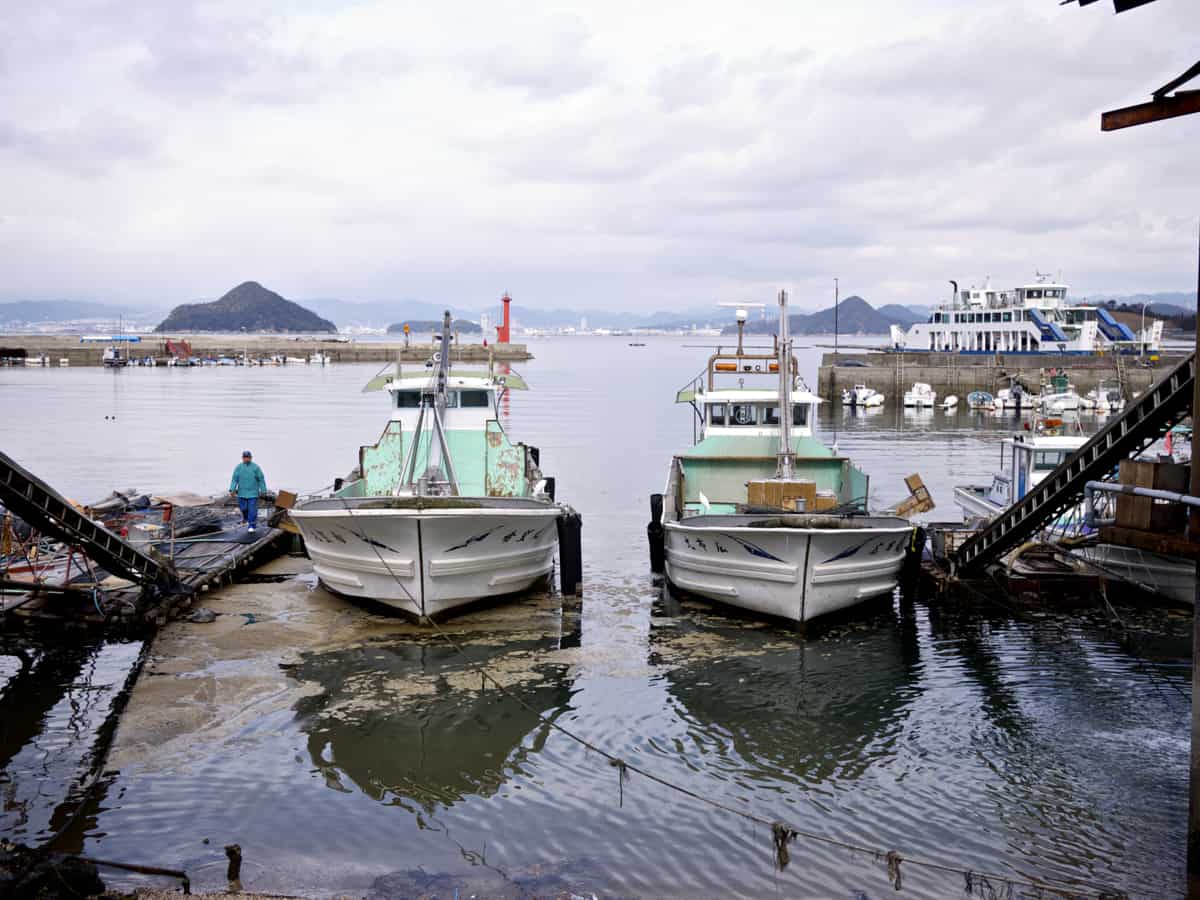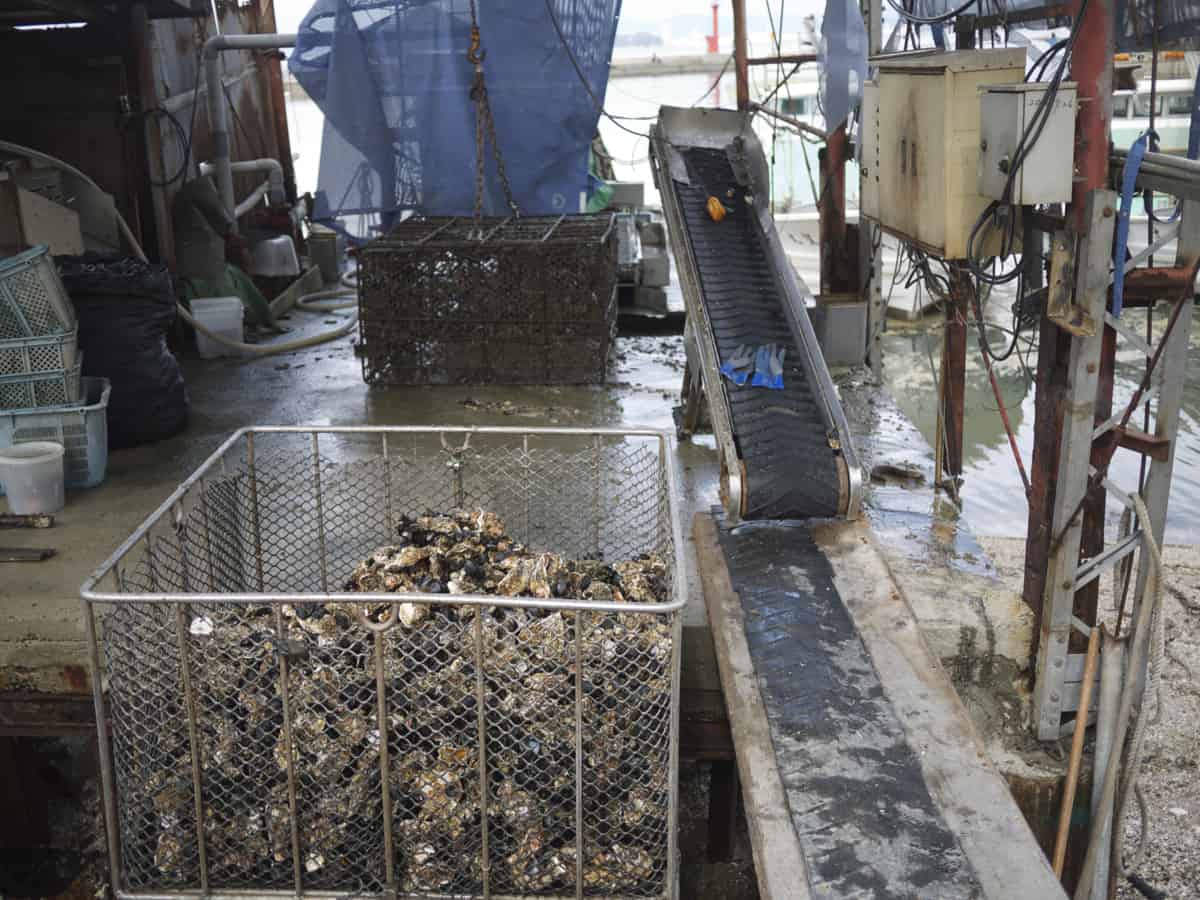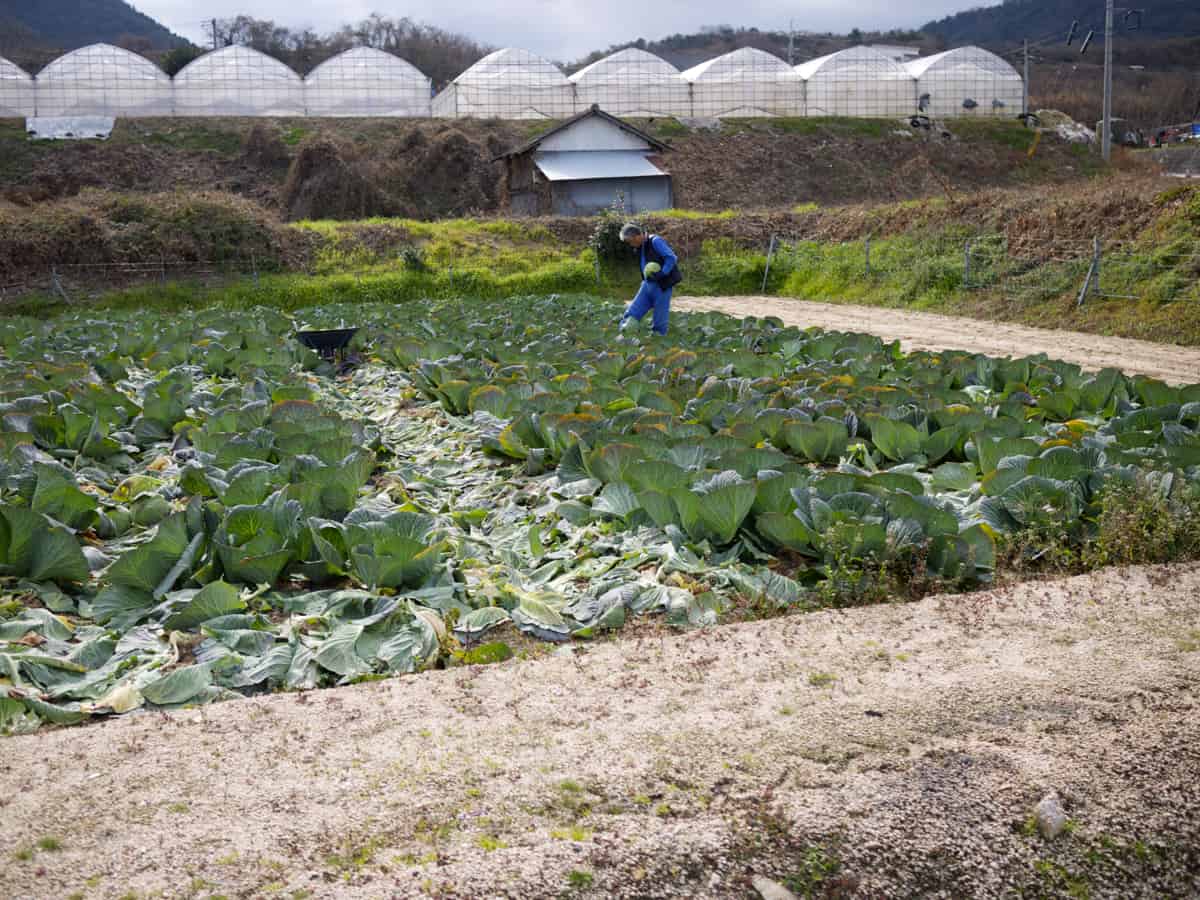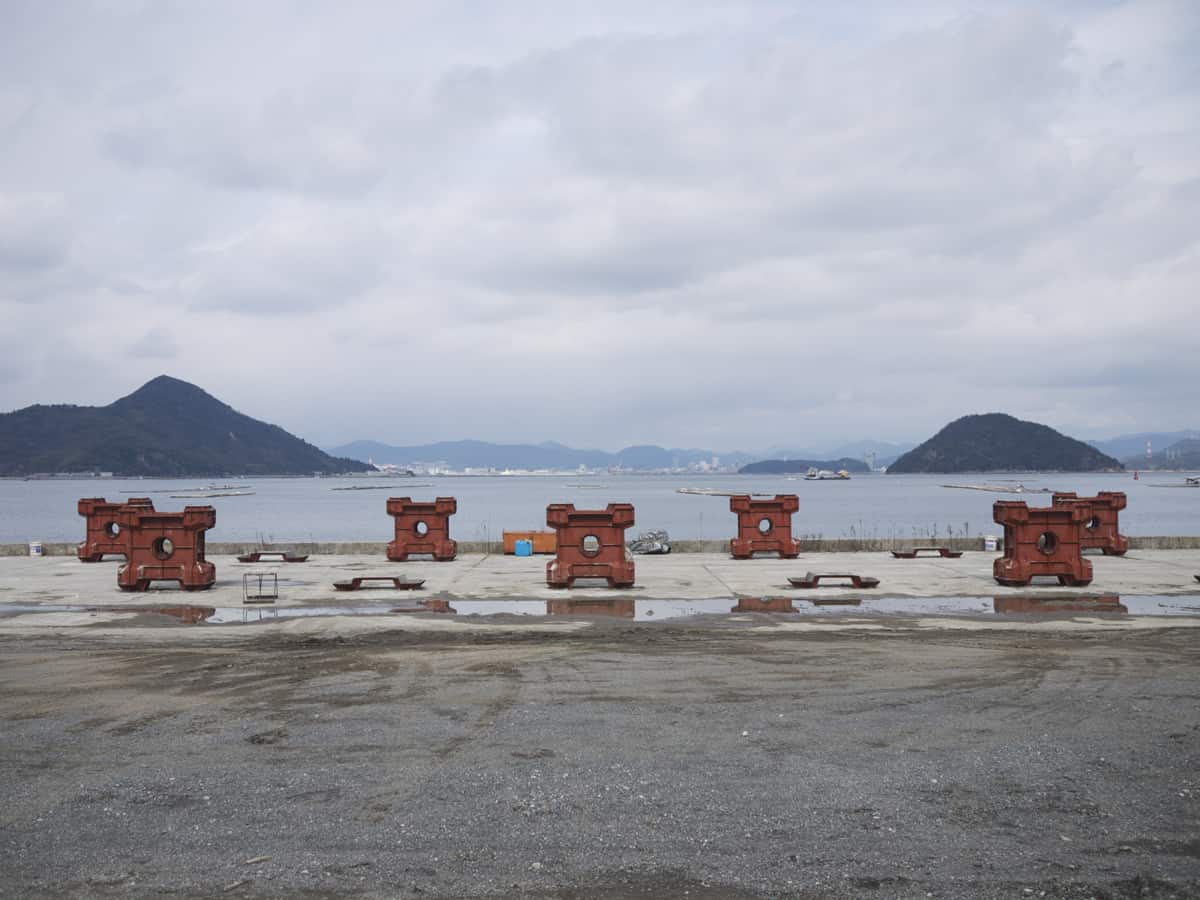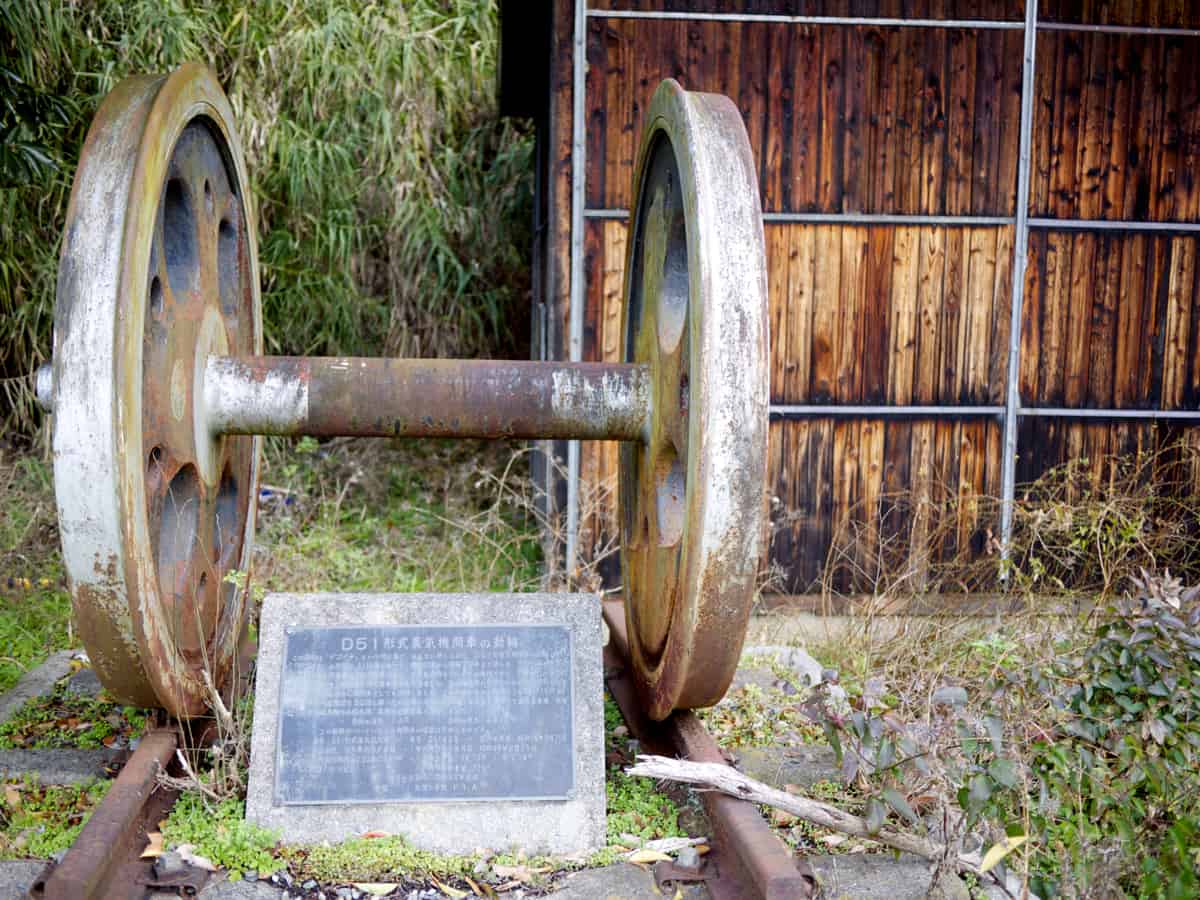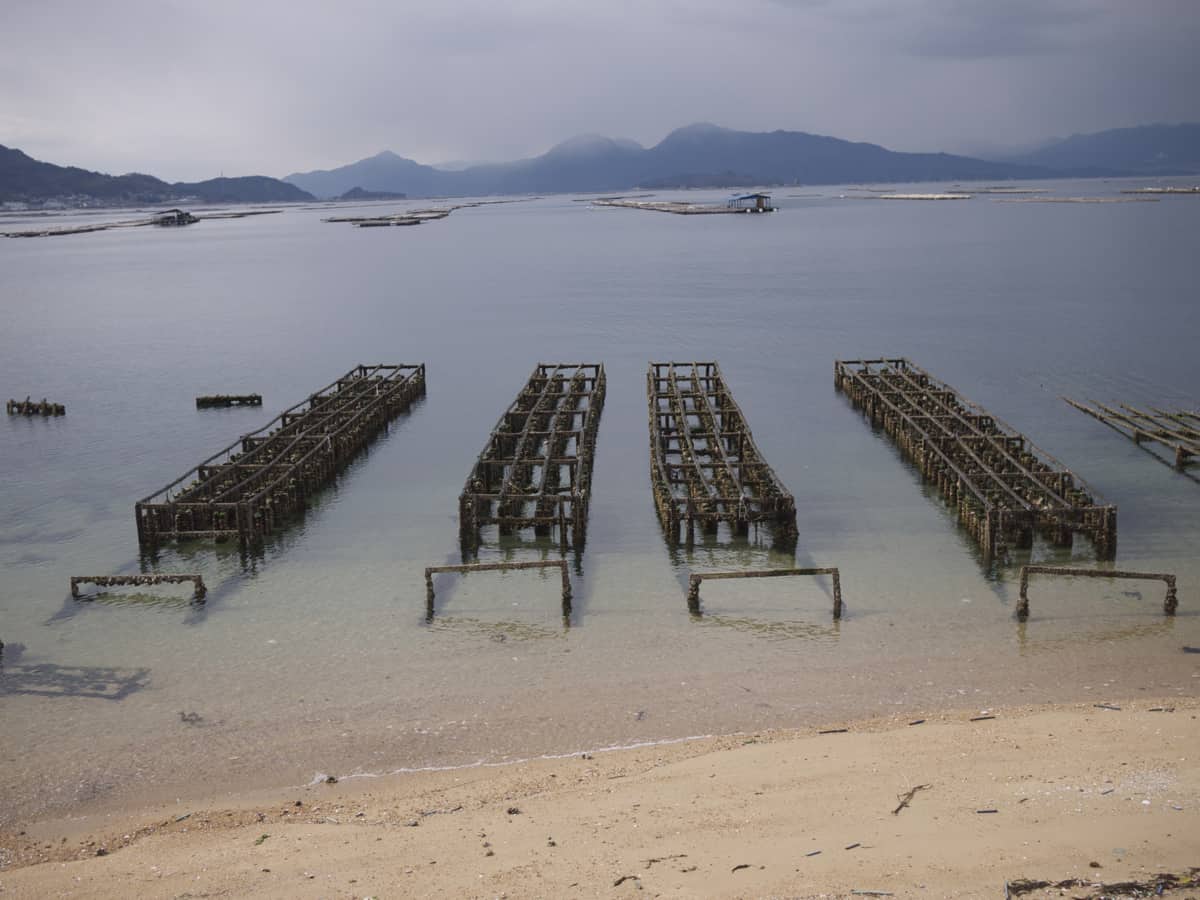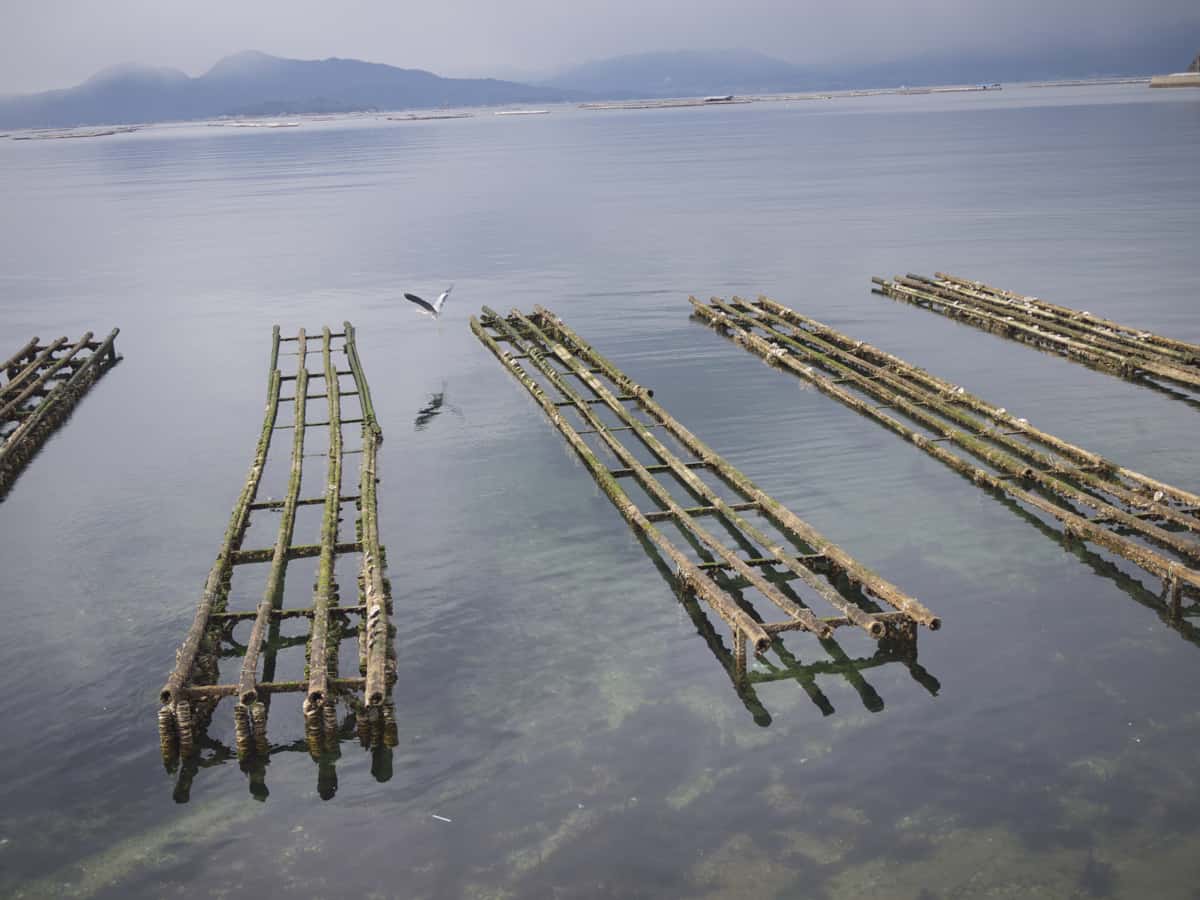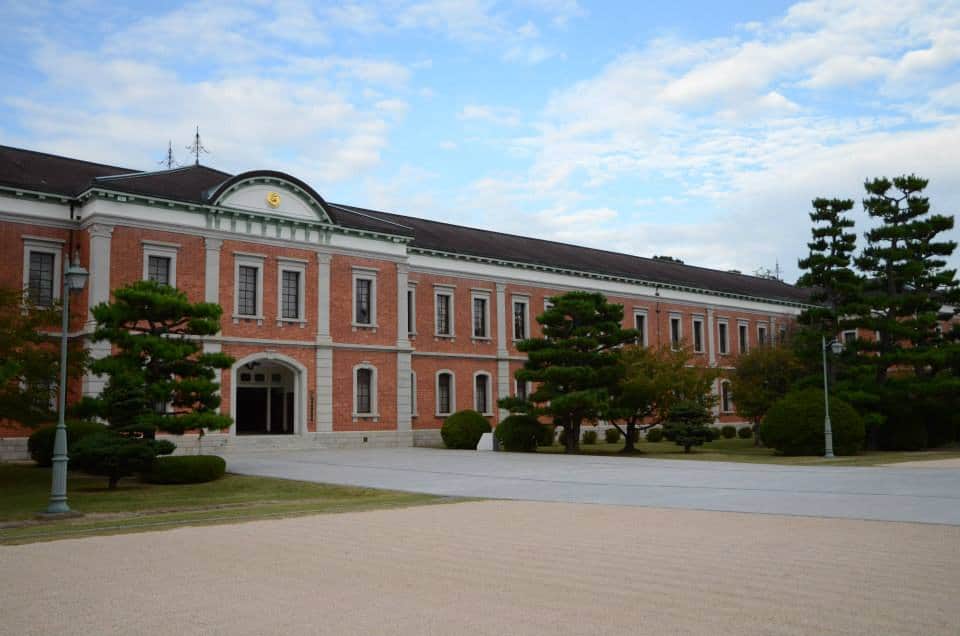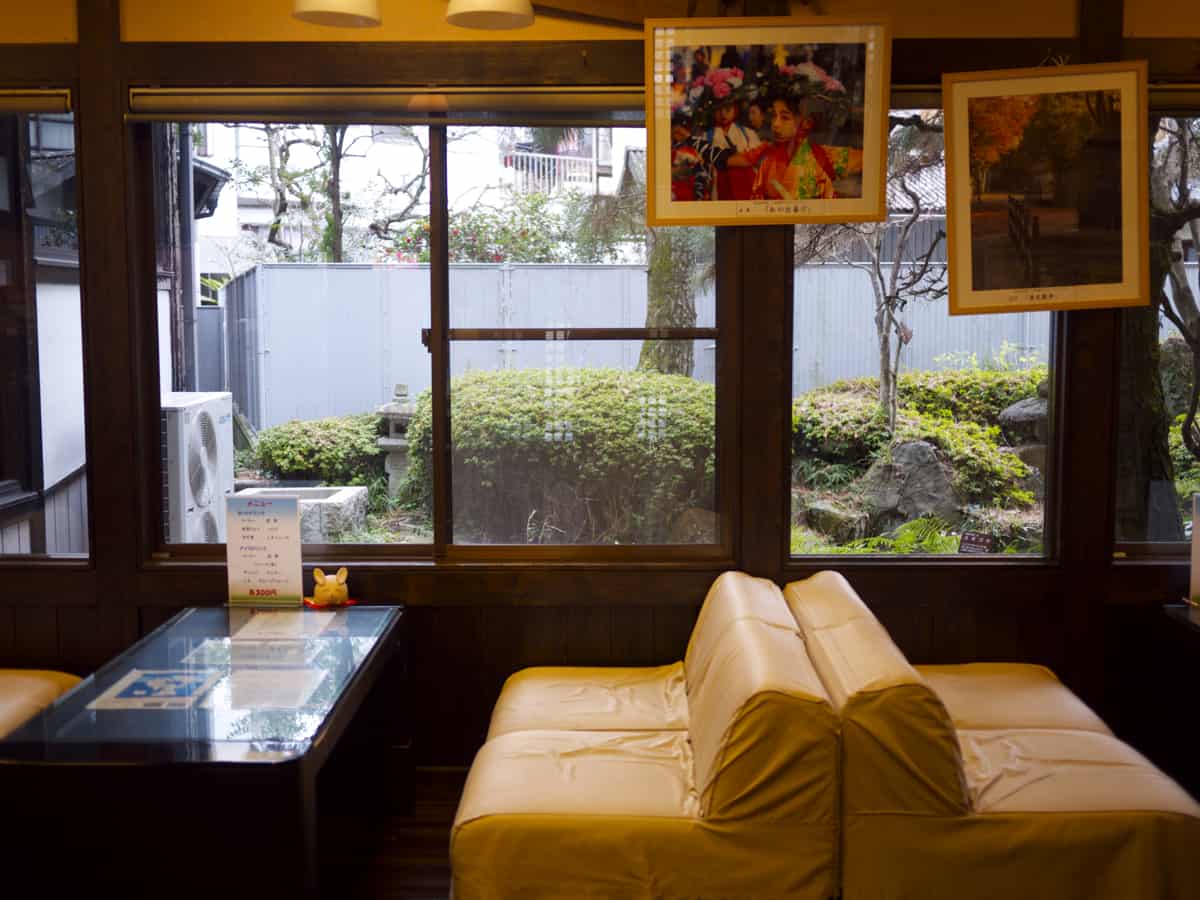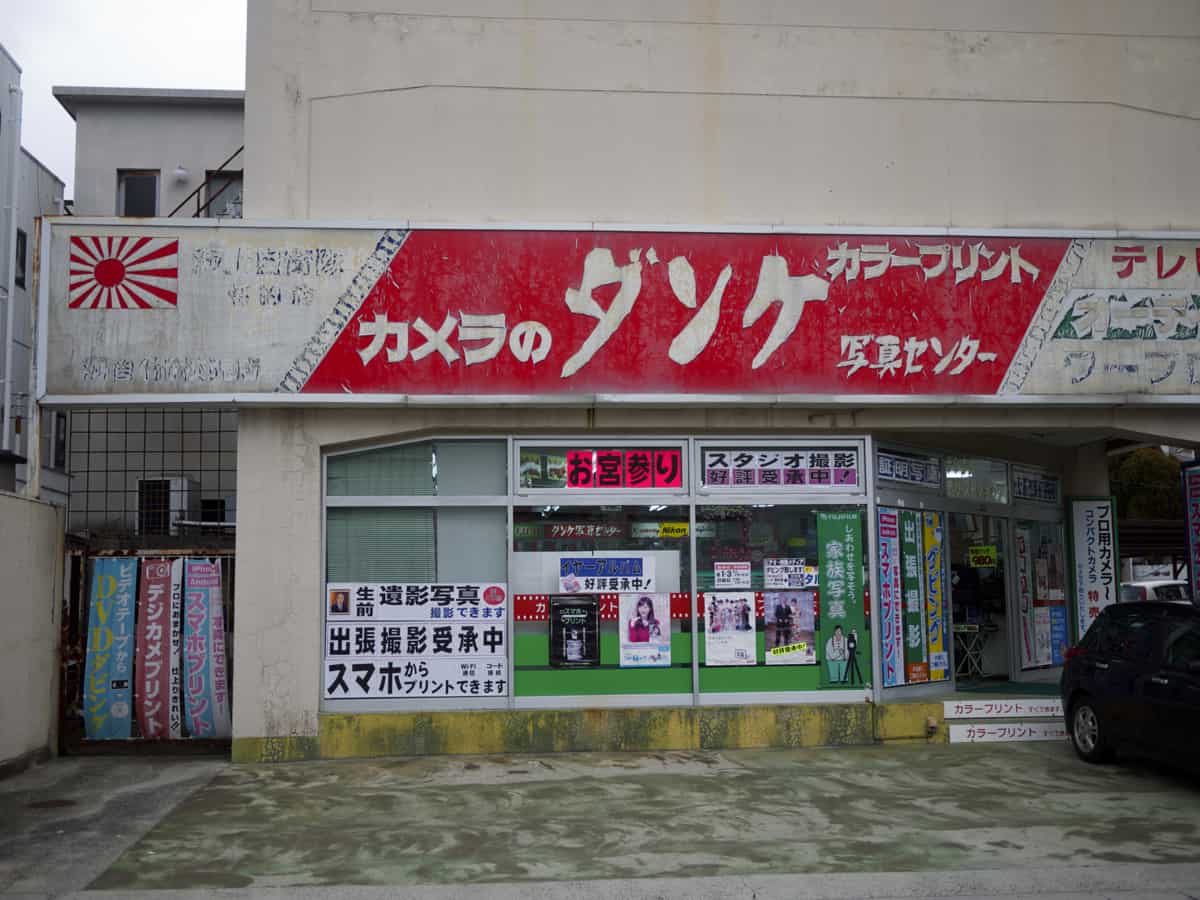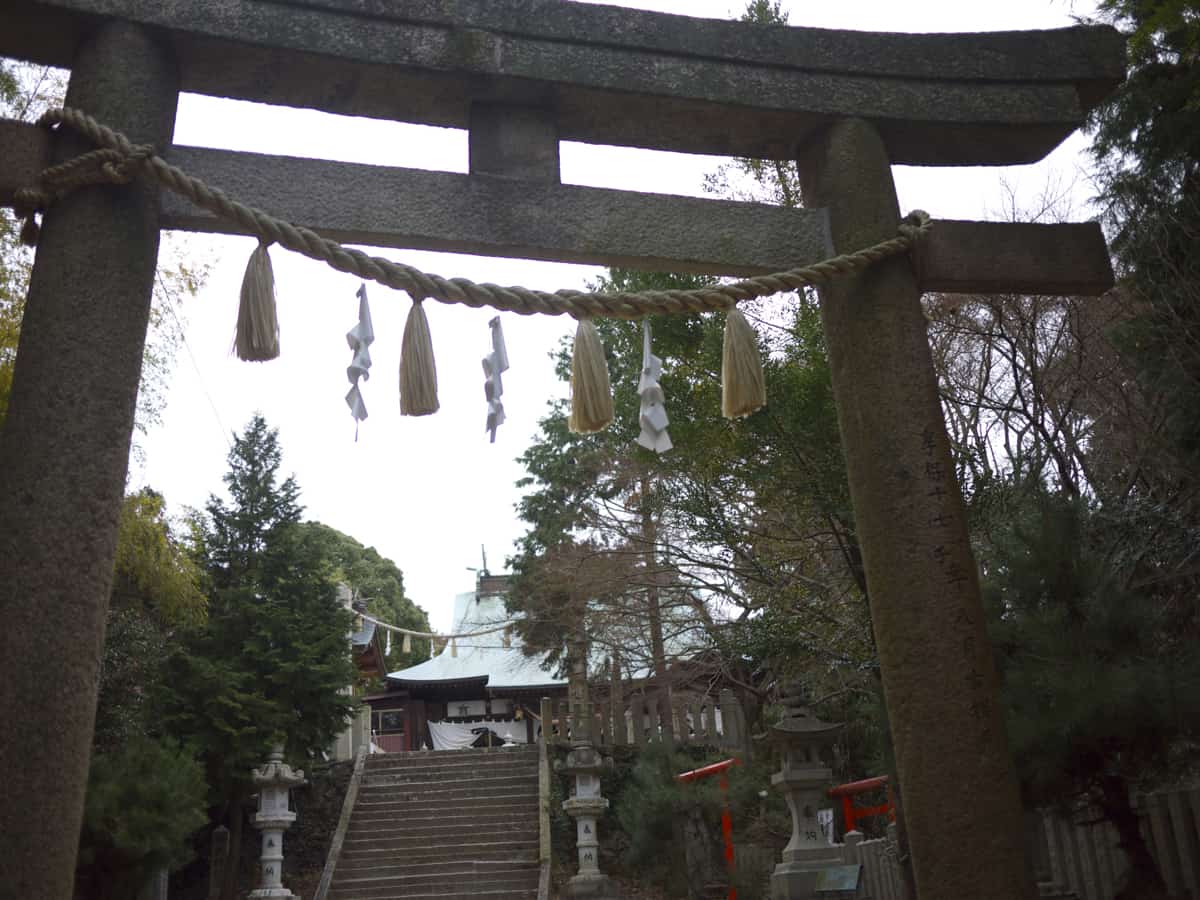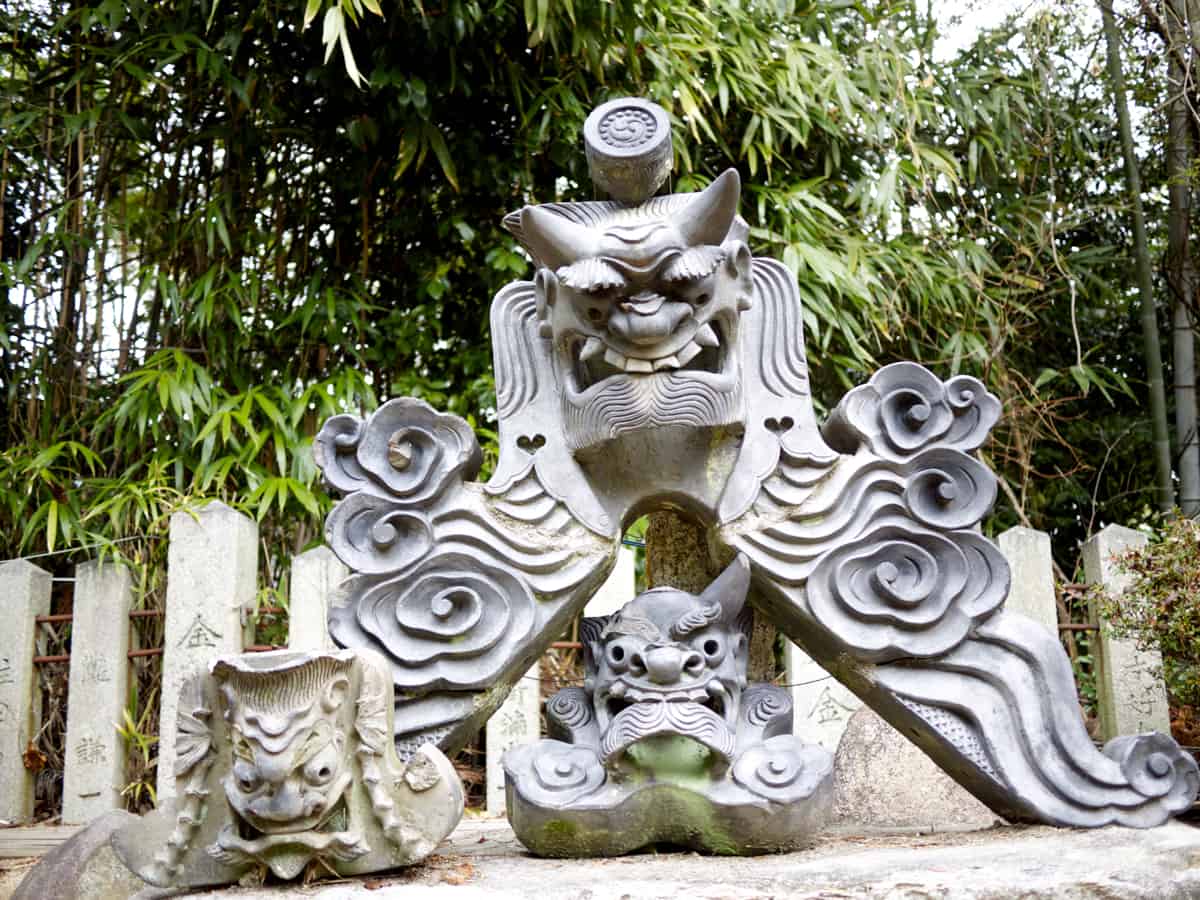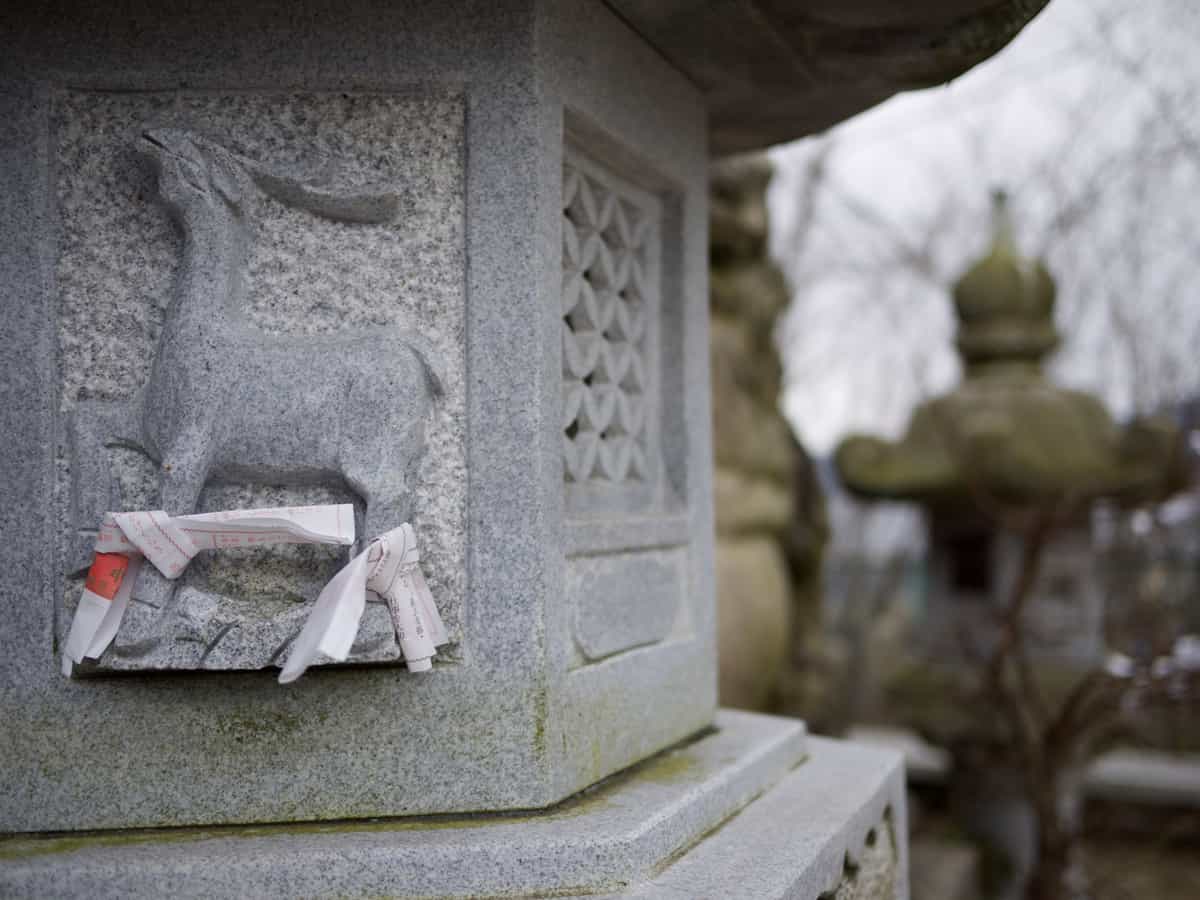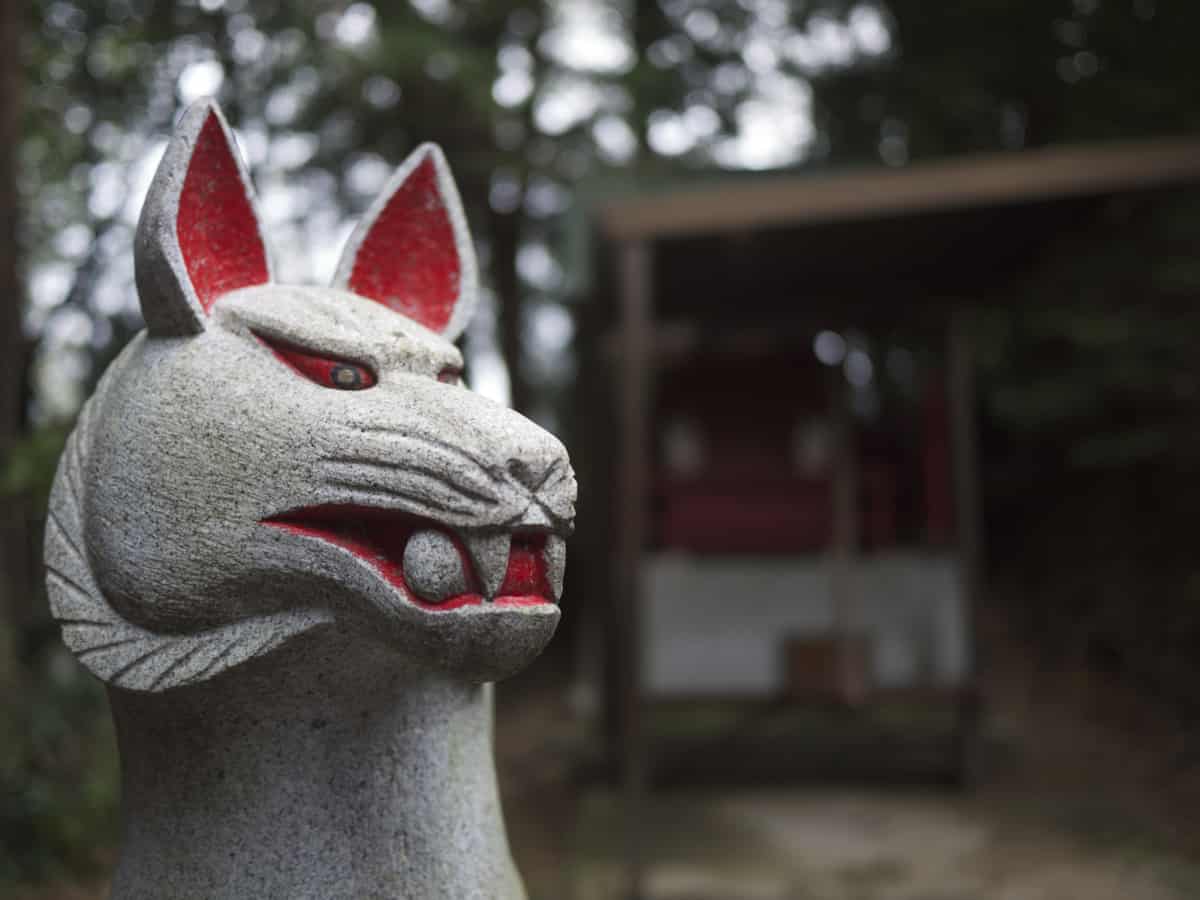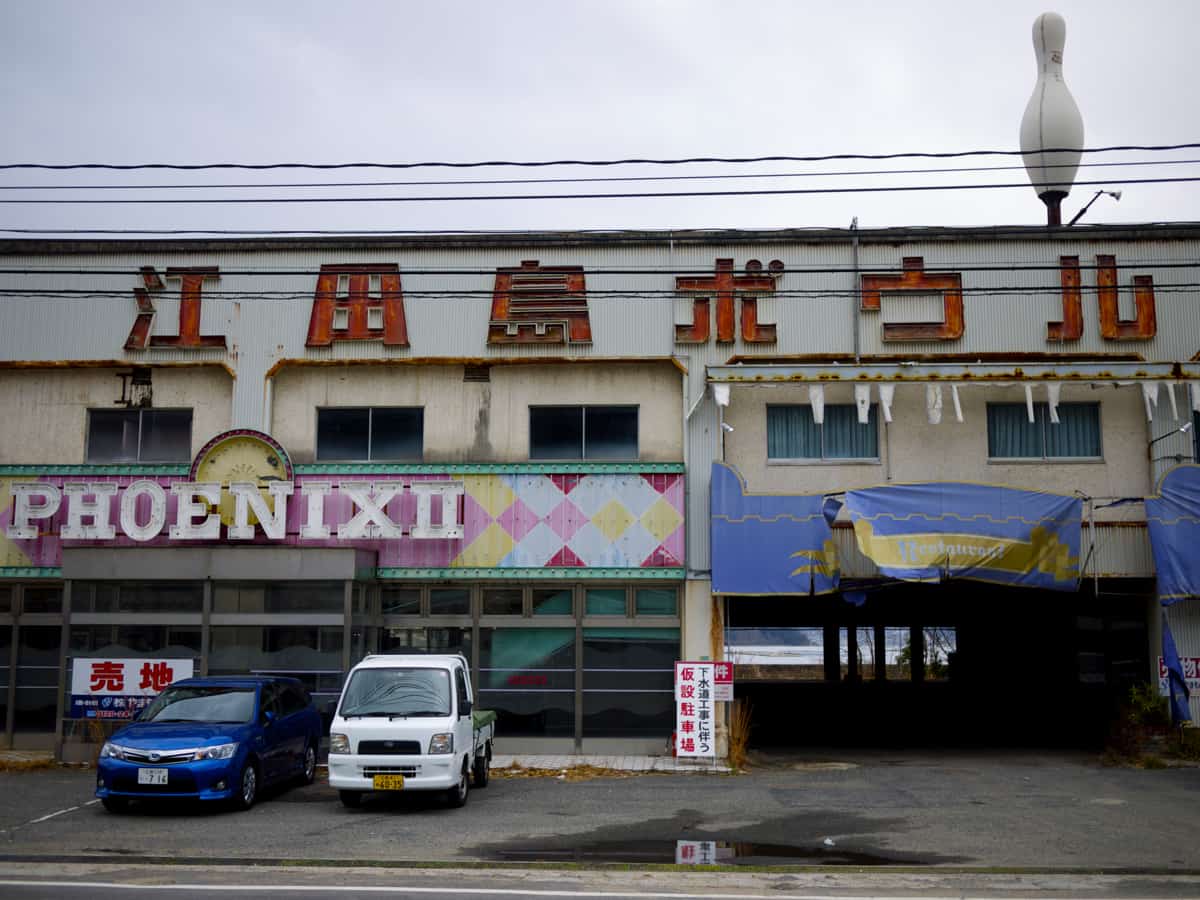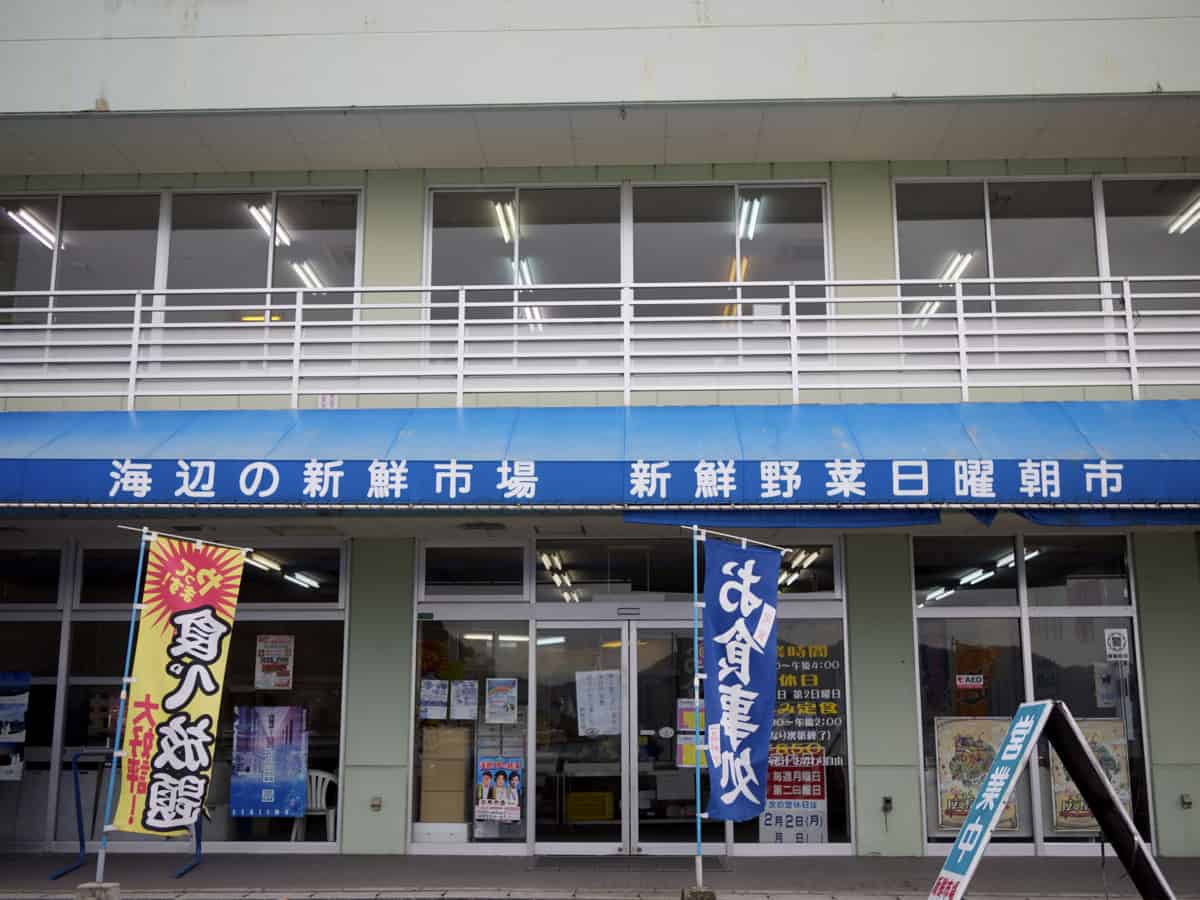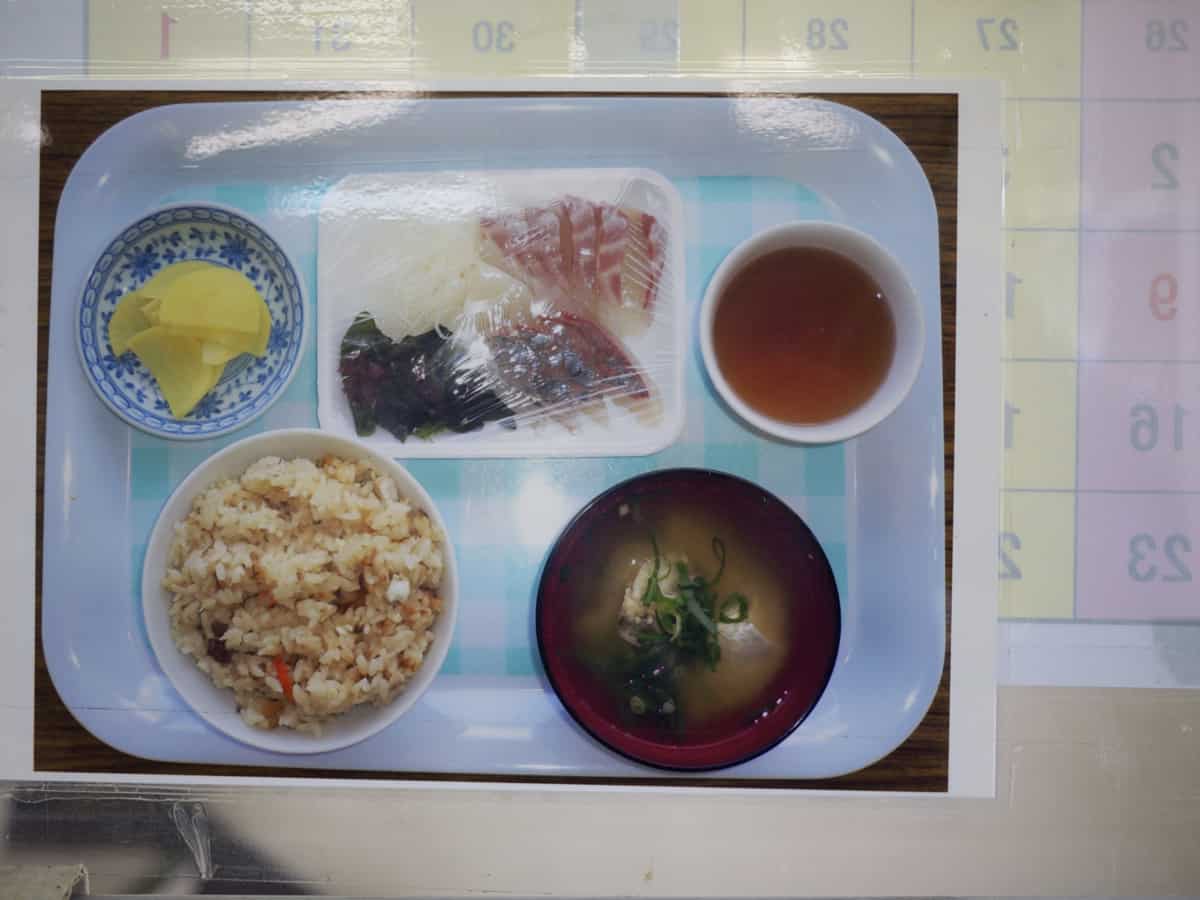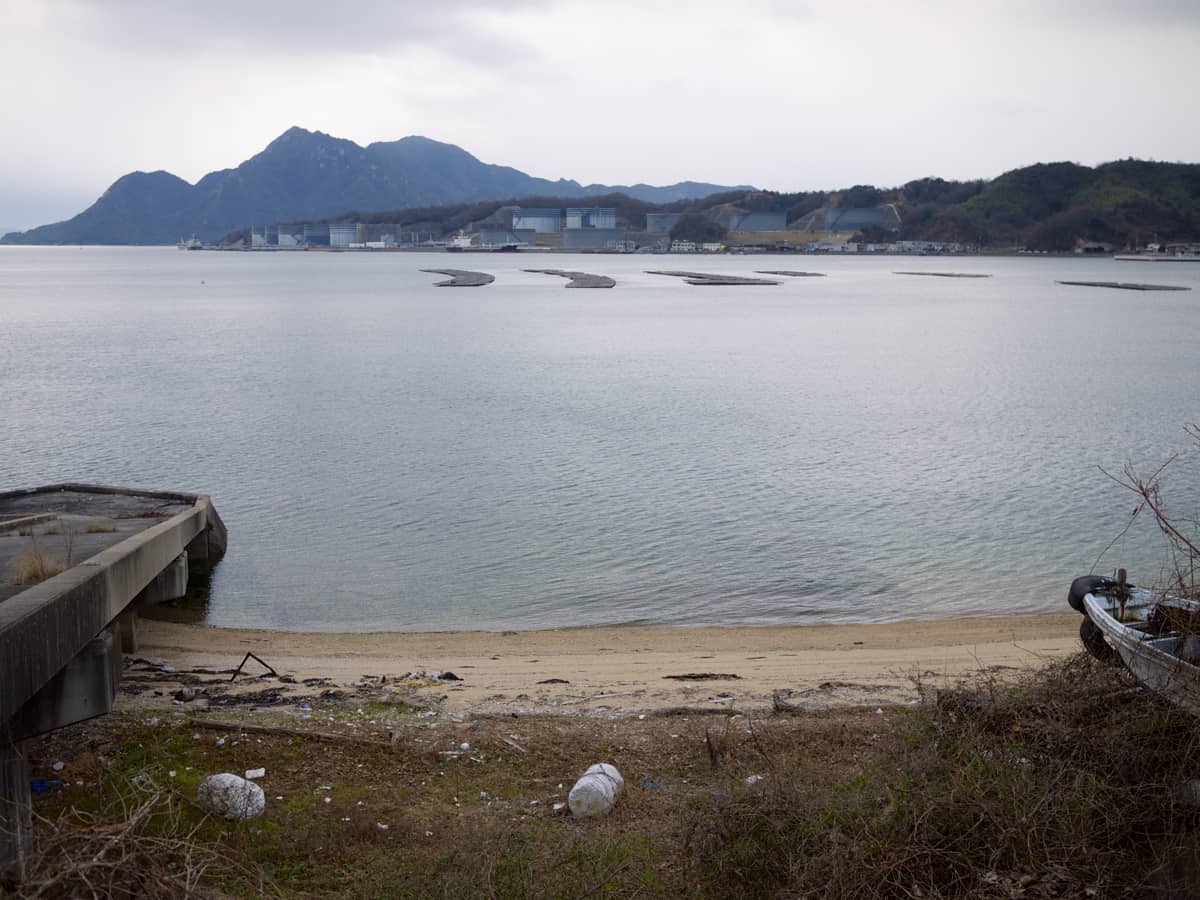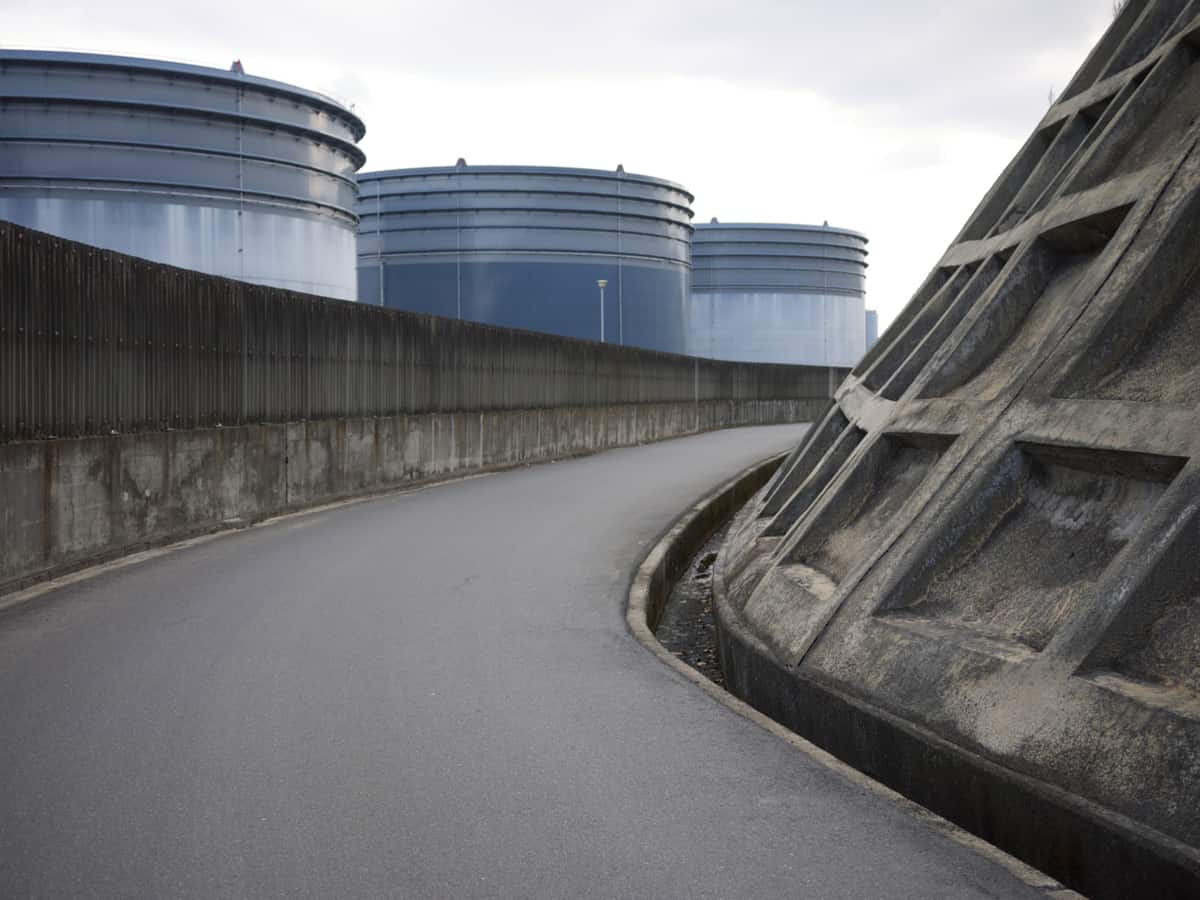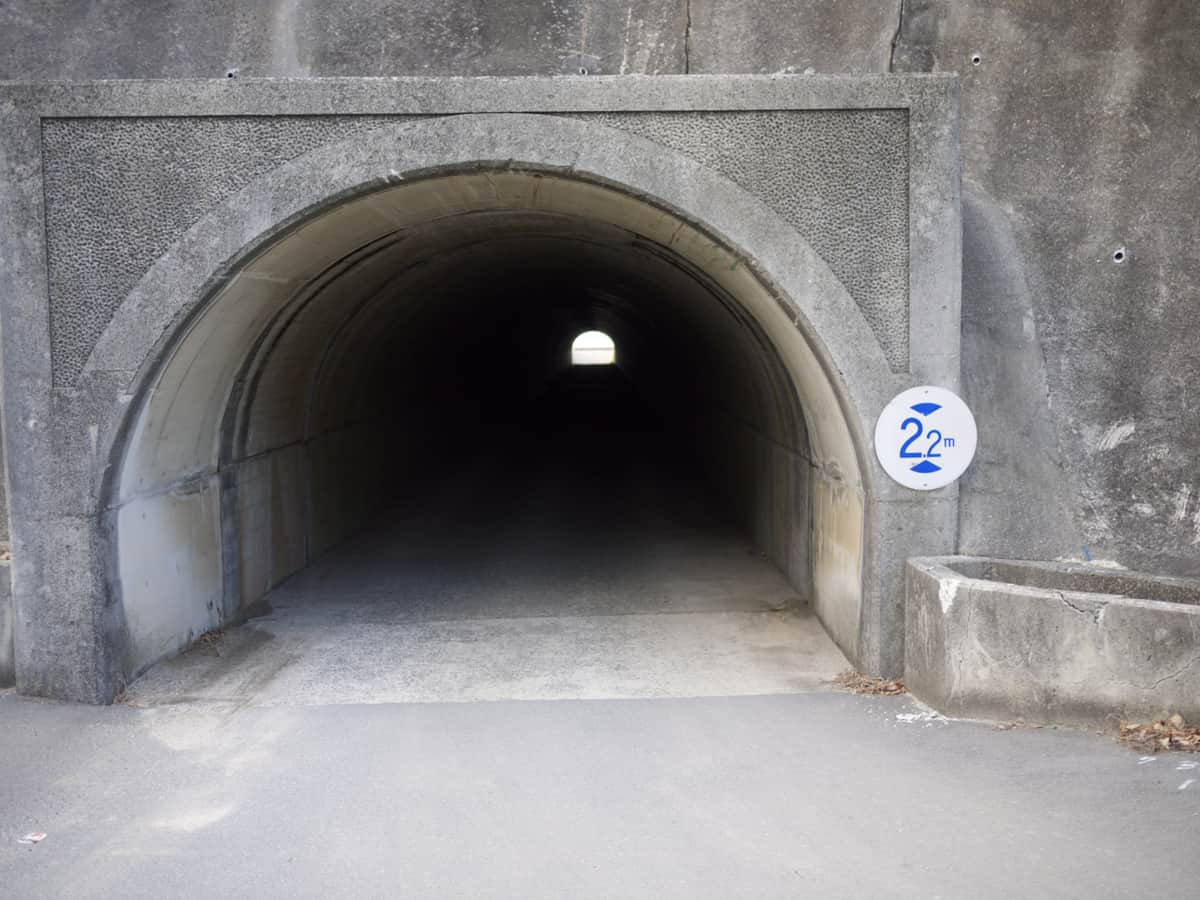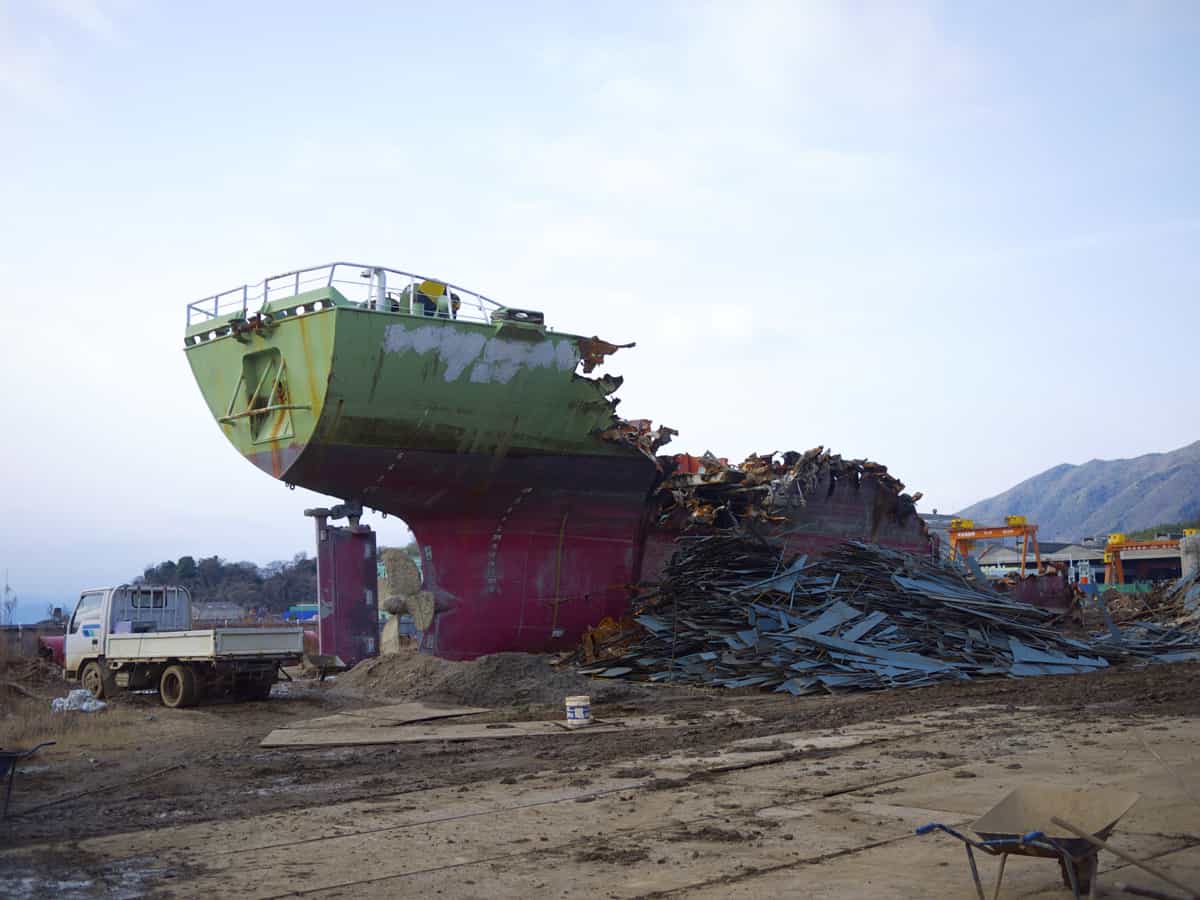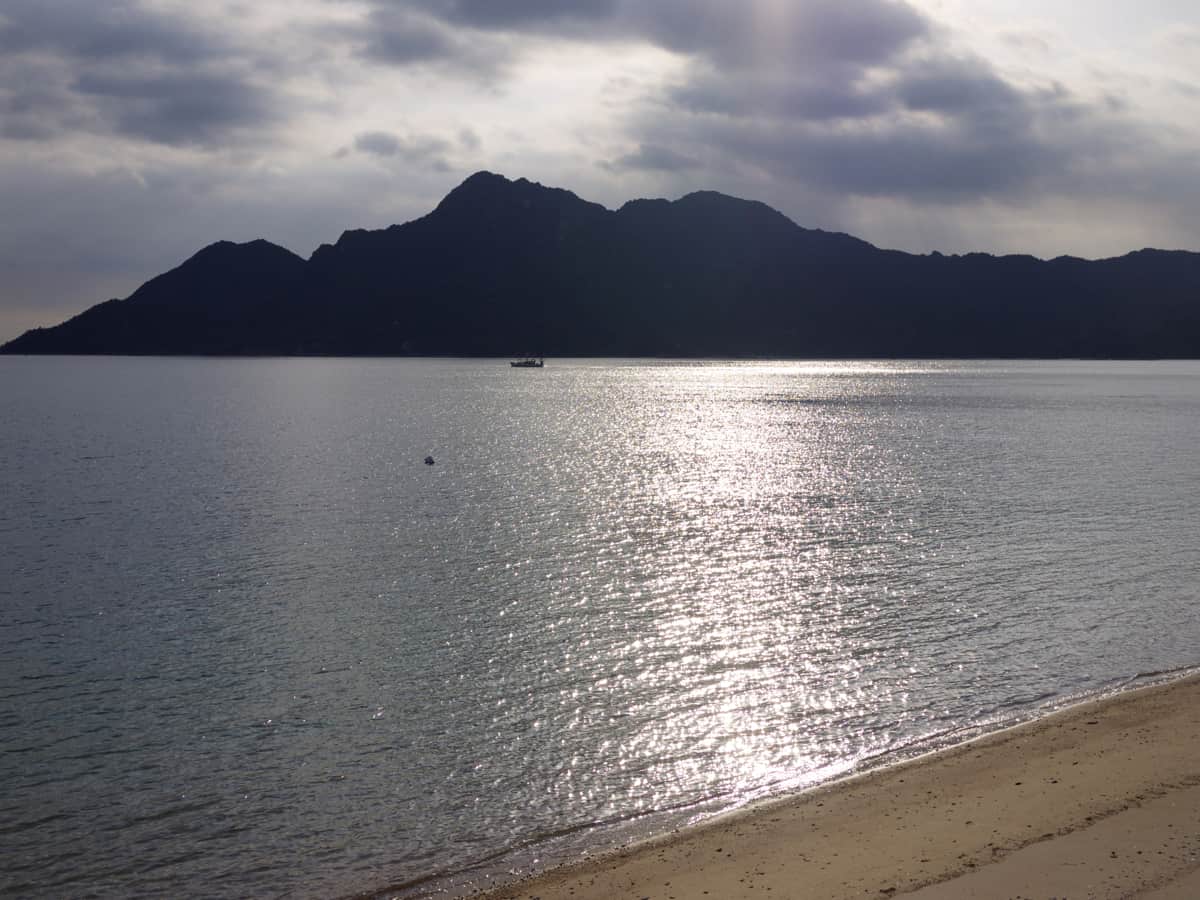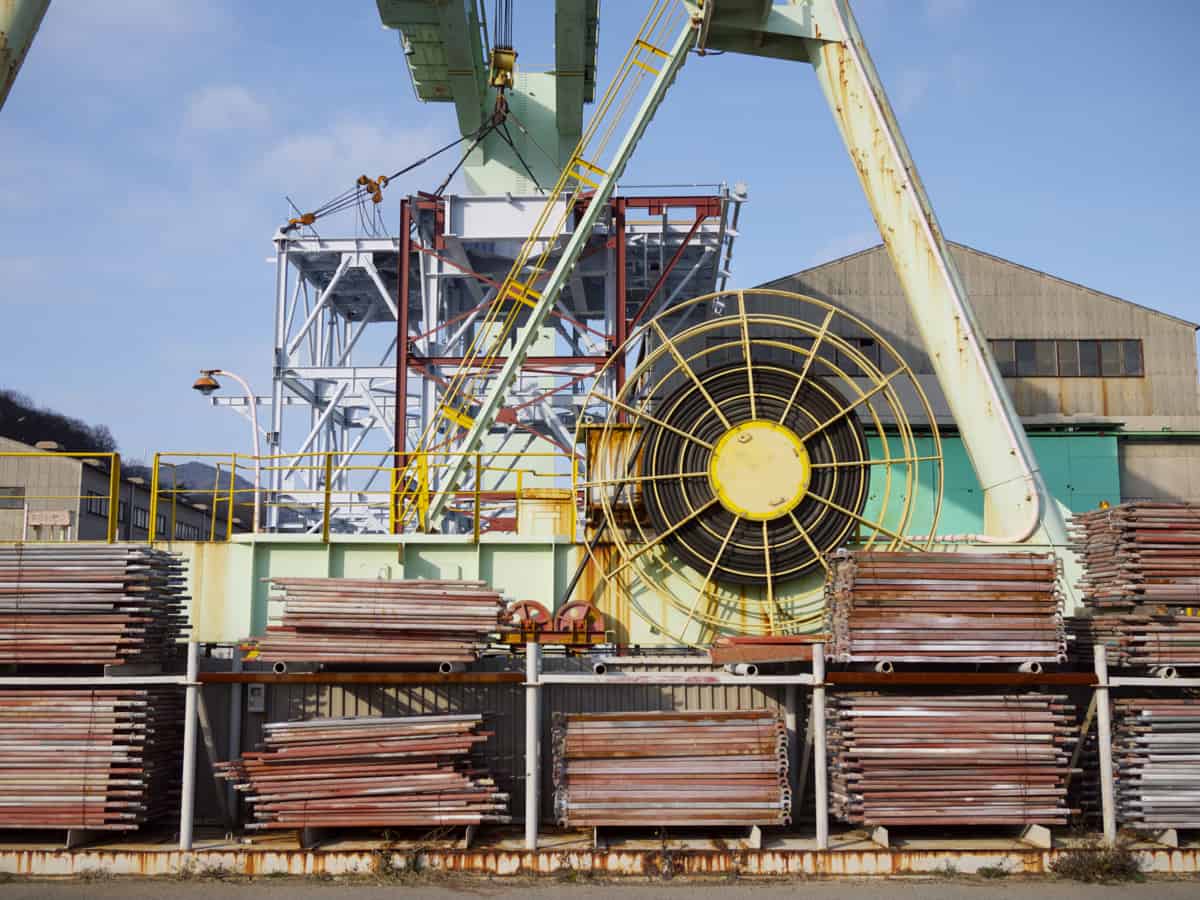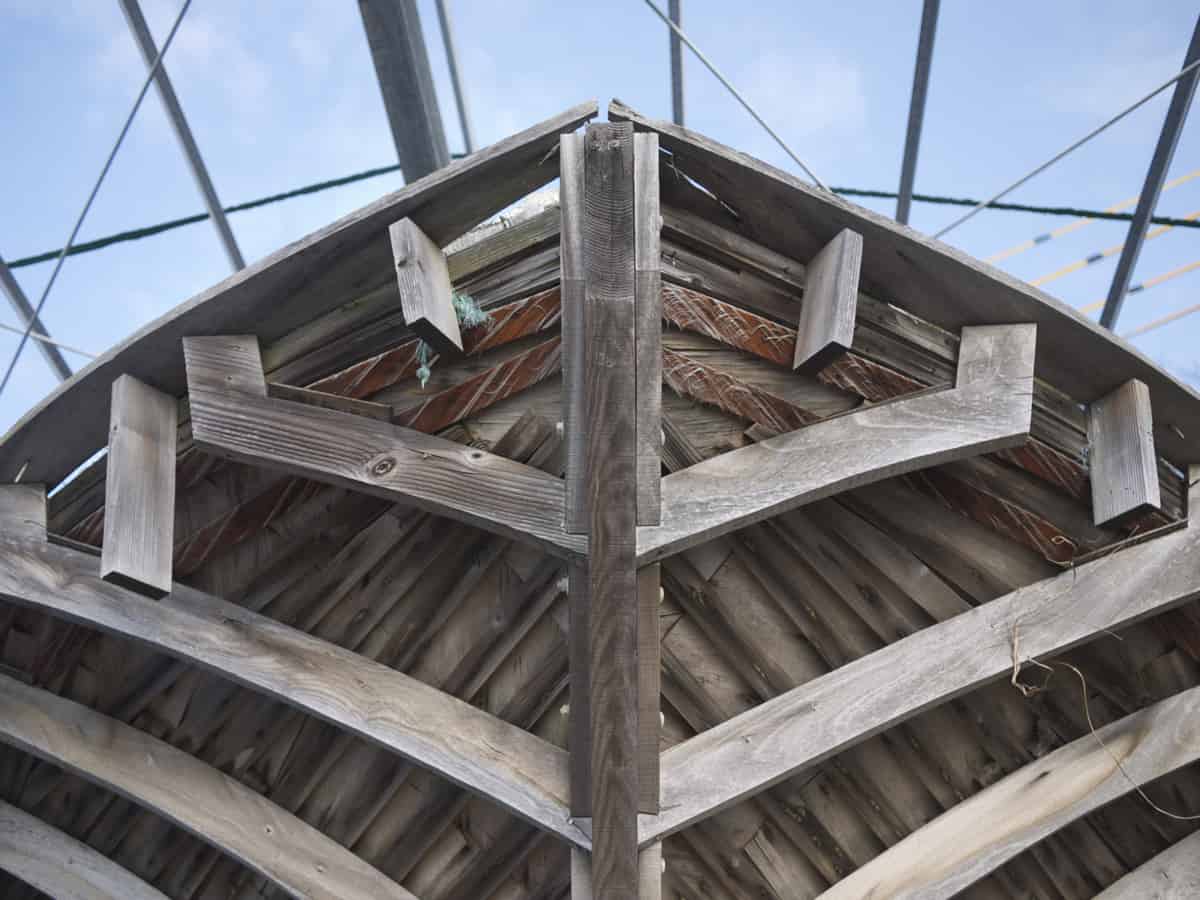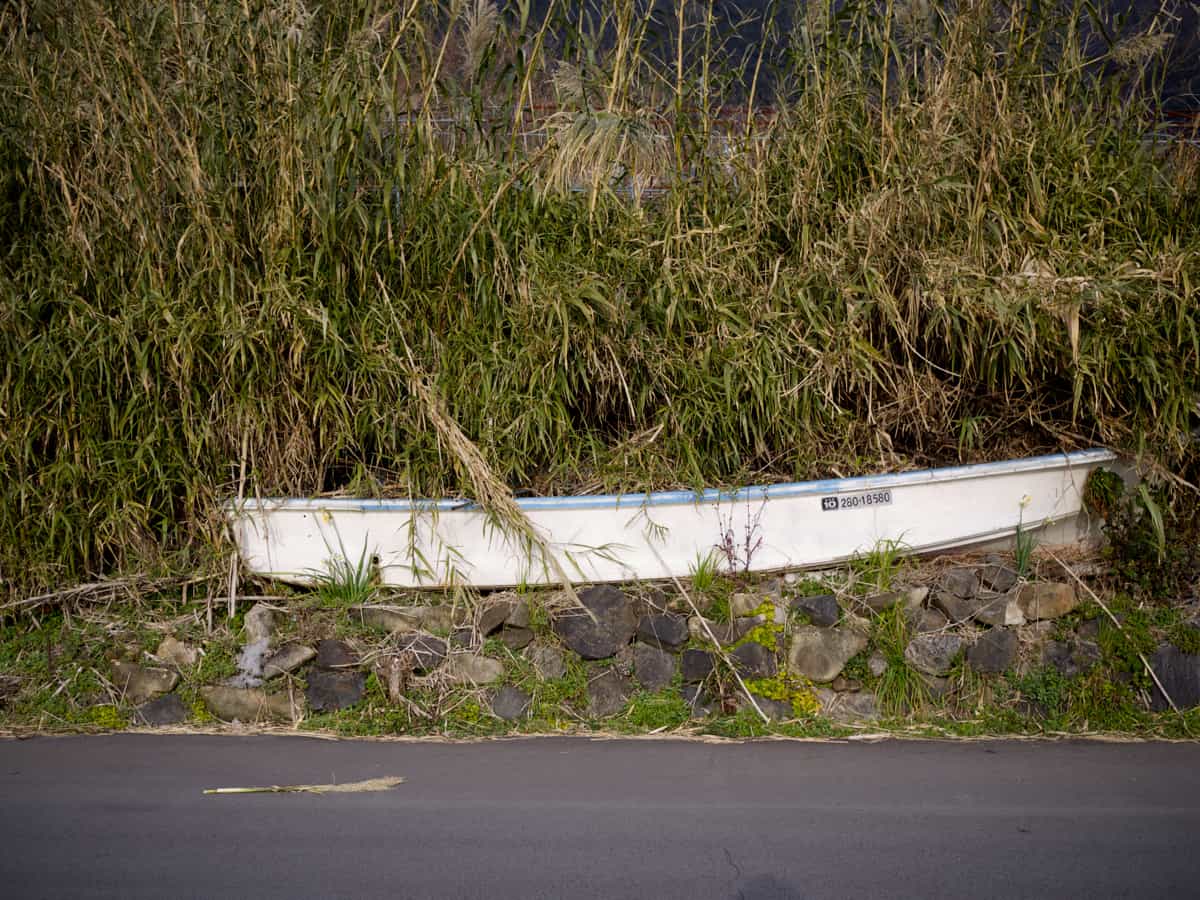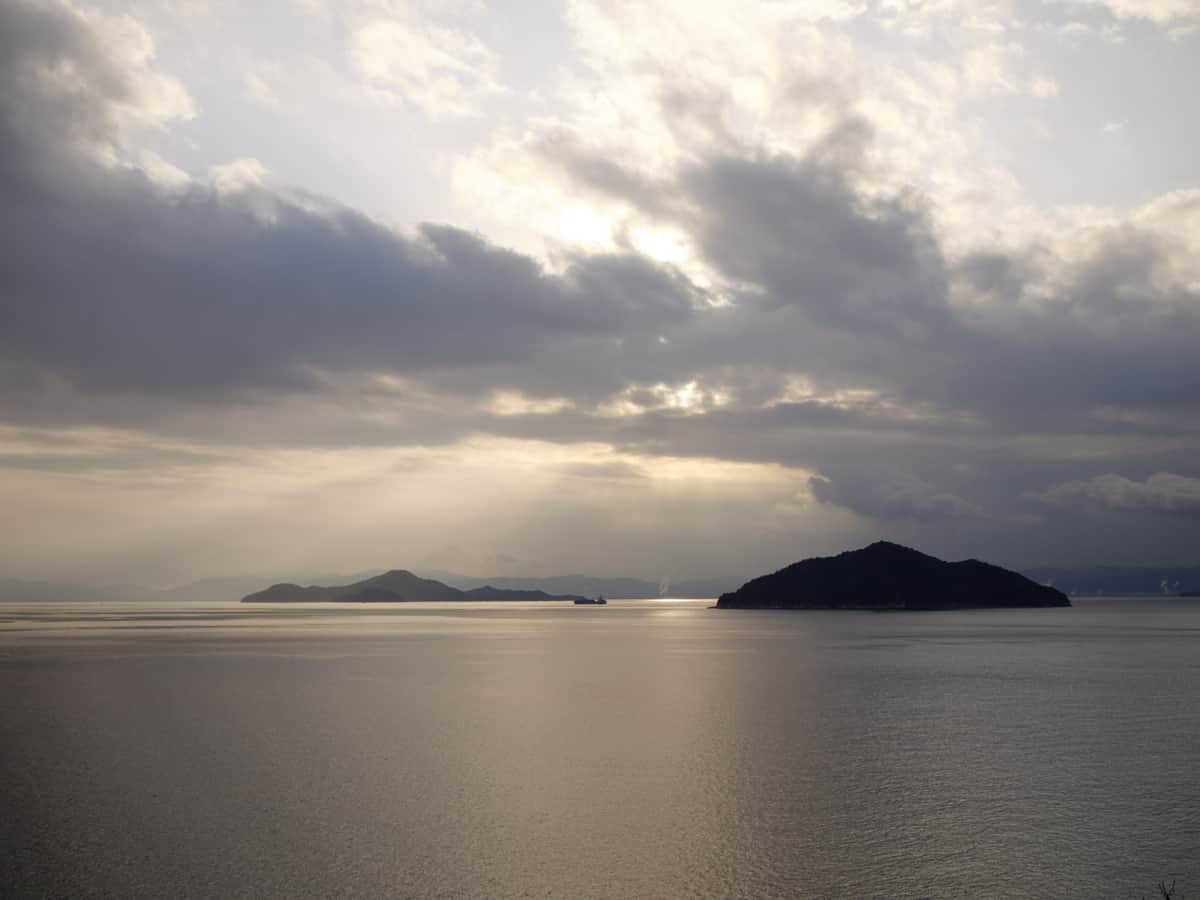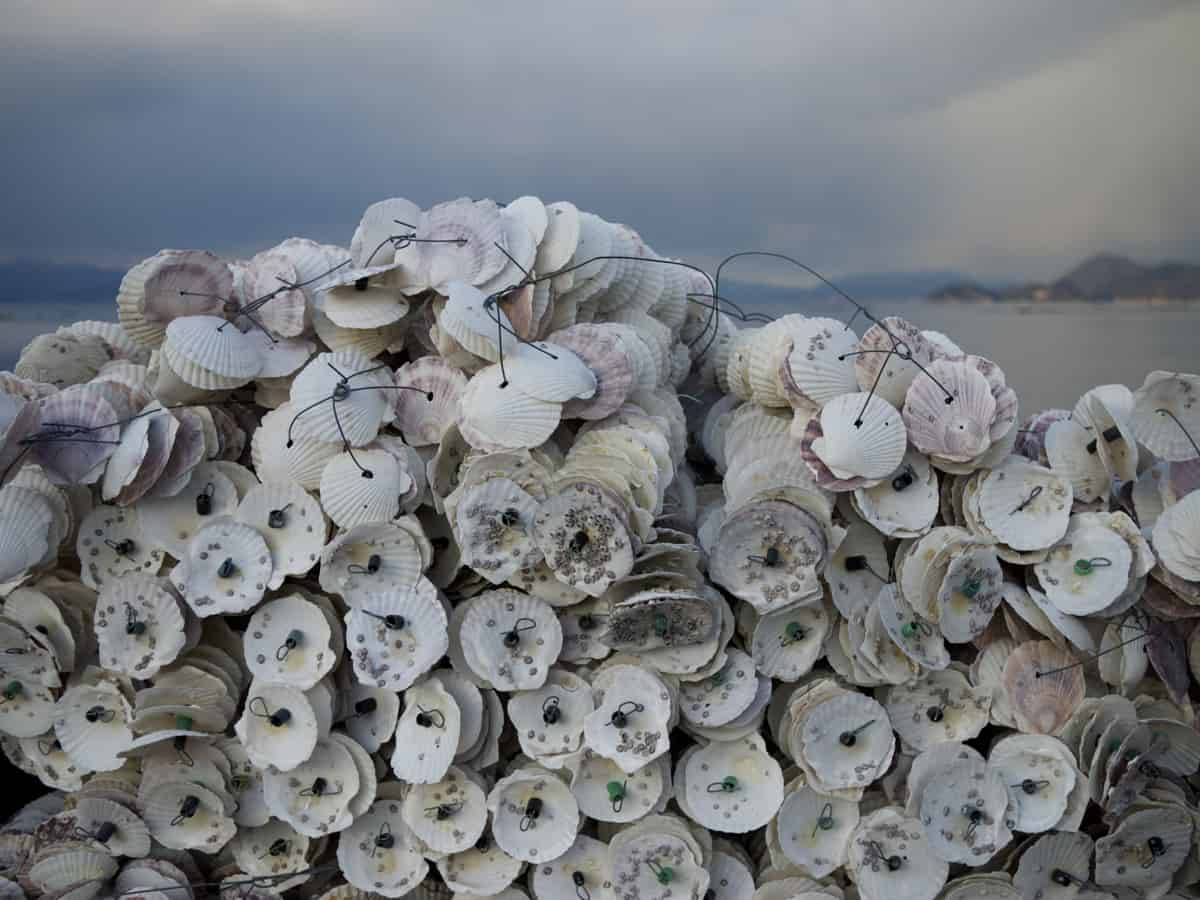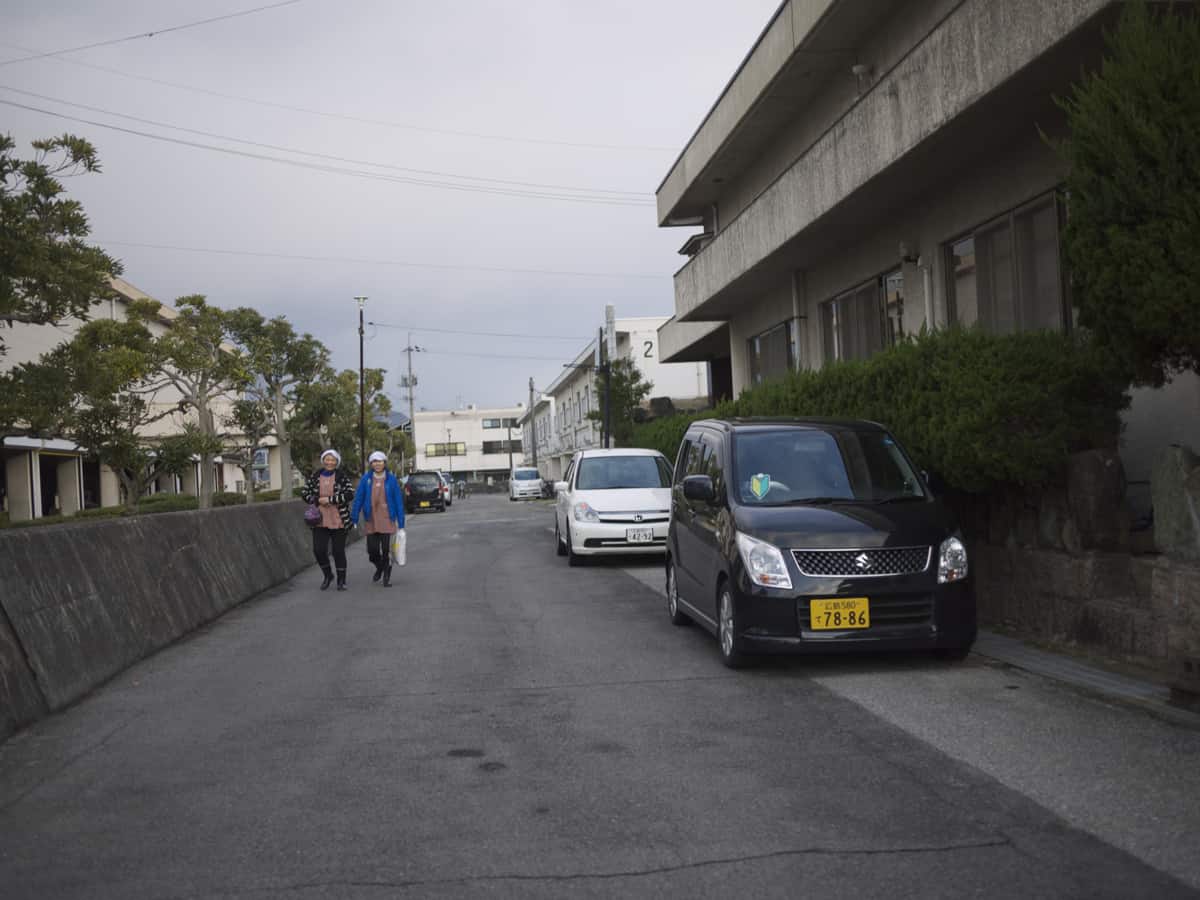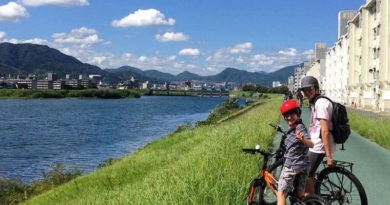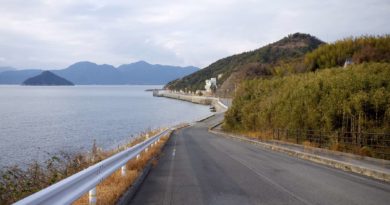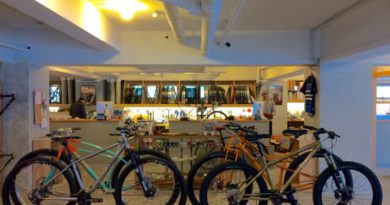Cycling around Etajima in late February
In hope of some early spring sunshine, I headed down to Ujina port on a Wednesday morning in late February to take the ferry to nearby Etajima Island [江田島]. The plan was to check out the island’s potential as a cycling destination for visiting travelers, pottering locals and diehard crank addicts for a feature in the spring issue of the GetHiroshima Mag.
It wasn’t until late in the day that the sun put his hat on and it certainly felt more wintery than spring-like, but I returned happy and looking forward to a return trip.
If it’s practical matters that you are looking for, try our Cycle Etajima Guide. Scroll down to the bottom of this post for our Cycle Etajima map.
After picking up the 3 day “Setouchi Saikuruuzu (Cycle Cruise)” ferry pass and a Cycle Island Etajima Map [ja] from the tourist information office at Hiroshima Port in Ujina, I boarded the 30 minute car ferry for Kirikushi on the of Etajima Island.
Passing Touge-jima [峠島] about half way to Etajima, you can’t help but ponder whether the disheveled hut next to a desolate shrine gate that stands on the thin sliver of beach is habitable and whether the 200 million yen that the island is up for sale for is a bargain (should you have a spare 200 million yen that is).
Kirikushi Port [切串] has a good array of vending machines nearby as well as a little store in the port building, a cafe upstairs that serves light meals and very basic toilet facilities. Next to the terminal oysters were being conveyed, washed, sucked and the shells spat out by some ancient-looking equipment.
Turning right out of the port and following the blue cycle line painted on the road, I headed along the coast. Small scale oyster processing plants and unfathomable pieces of concrete lined the sea side. Plastic greenhouses and small plots in which winter vegetables grew providing splashes of green on the other.
Foregoing the “main” road, which cuts across to the center of the island, I continued west, the road narrowing and hugging the sea. Shooting by Oozu [大須], what looks like a large train wheel that is displayed on the roadside catches my eye. It’s a driving wheel from a Class D51 “Degoichi” steam locomotive that never ran on this island. All along this stretch of coast oyster rafts stand in the sea. Encrusted with rust, their appearance belies the value of the oysters that are stacked beneath. Even under blue-grey skies the water close to shore looks crystal clear close. A startled heron takes flight. Around another corner, piles of shells on which oysters are cultured, now discarded, are less picturesque, but attract all kinds of birds.
Around another bend I hear blasts from a navy firing range and cycle past cadets undergoing fire-fighting training. After short climb which skirts Furutaka-yama [古鷲山] (from the top of which good views of the Naval Academy and surrounding islands are to be had), the road drops into the Etajima “city center”. Here, I pop into the Furusato Kaikan Cycling Station where they offer comfortable shelter, free hot tea and have bicycle pumps and tools on hand. I don’t have time to tour the Naval Academy on this trip, so on I push.
On the left as you leave the center, I see a steep flight of stone steps which lead to Etajima Hachimangu Shrine. Tucked in the bamboo grove next to the main shrine building is an atmospheric Inari Shrine with its distinctive red torii gates and fox statues.
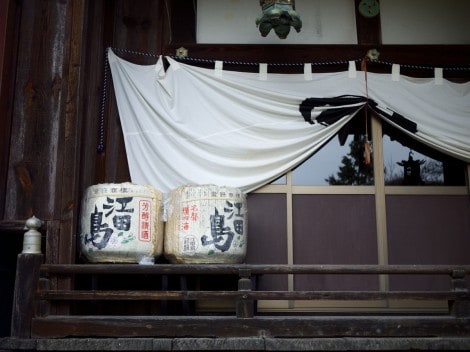
The wind starts to pick up and icy drops of rain start to fall as my stomach starts to grumble and my fingers start to go numb. The sight of a former pleasure palace, now closed, peeling and worn and a 50m stretch of hedgerow protected by a bizarre army of strung up Mickey Mouses, Donald Ducks, Winnie the Poohs and various anime characters keep me interested.
I pull up to the Umibe-no-shinsen-ichi Seafood Market [海辺の新鮮市] just in time about 15 minutes before they stop serving their lunch platters. Or so I thought. A cheery guy tells me I’m way too late. If I really want to get the choice of the best raw sashimi fish slices I need to get there around 11:30am. I am despondent and have to be satisfied with a photo of a photo of the pick-your-own sashimi lunch plate that comes with all-you-can-eat rice and miso soup. I’ve already missed my hot soak in the Seaside Noumi Onsen Hotspring (closed on the 2nd & 4th Wednesdays of every month) and despite riding like demon to get a bowl of udon noodles made from tofu at the roadside Sakura in Ogaki [大柿], they are also closing their doors when I arrive. I end up refueling at a 7-11.
So, here is a view that sums up Etajima quite well. A strip of sand littered with assorted fishing detritus, looking out over pretty (often clear blue-green) water dotted with oyster rafts to mountains skirted by industry. I little bit of everything; those looking for “real Japan” need look no further, at least for the reality of much of the Inland Sea.
And here we are across that stretch of water, in the thick of Mitsubishi’s Kanokawa Oil Terminal which stores some 760 thousand kiloliters of crude and fuel oil in giant tanks. “Meticulous care is taken to ensure disaster prevention and safe operations so as to avoid tarnishing its beautiful natural surroundings,” we are assured.
Past the oil tanks we shoot through a tiny, unlit tunnel…
… boom, a huge ship being dismantled for scrap.
To be honest, all this reality and the chilly breeze is starting to get a little old, when, finally, the sun appears. I turn my back on the scene from WALL-E and am treated to this glorious view.
In the afternoon sun even industrial plant starts to look pretty.
From here, the road heads north up the coast to Okimi [沖美], things are rustic once more. You see some more traditional shipbuilding in progress.
As well as craft run aground.
The road climbs above Sun Beach Okimi, a resort on the most accessible of several passable beaches along thing stretch of coast, and I detour into Shikata Park [鹿田公園] and make the short hike up to its viewpoint. Stunning sunsets can be seen from here and from inviting cafes nearby. Unfortunately it is too early in the year to stop at the Etta Jazz Cafe and the Yumekirai [夢来来] stone-fired pizza restaurant is only open at weekends and on national holidays.
It’s too cold to hang around for the sunset. I make a mental note for my next visit of the sign pointing up a steep-looking climb to the remains of a wartime gun battery. Passing by more evidence of the oyster industry that supports much of the island, I hear a mixture of languages as international workers who labor in the processing plants make their way home. I pull into Mitaka Port [三高] to catch my ferry back to Hiroshima.



